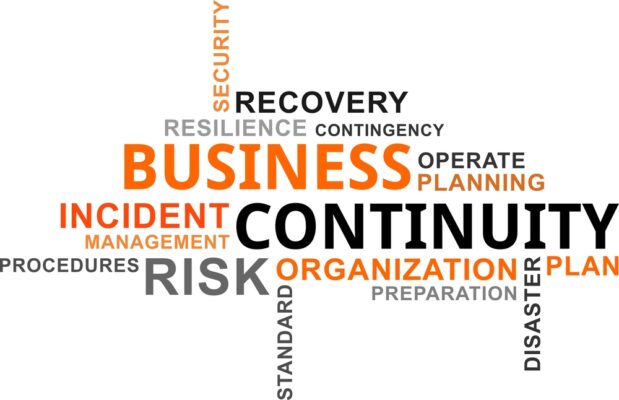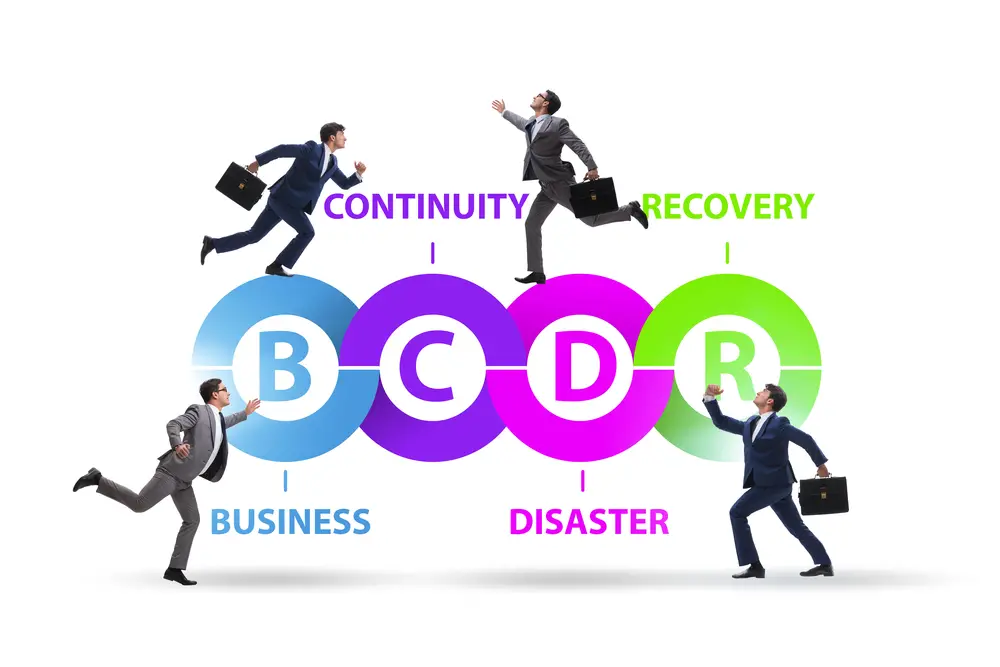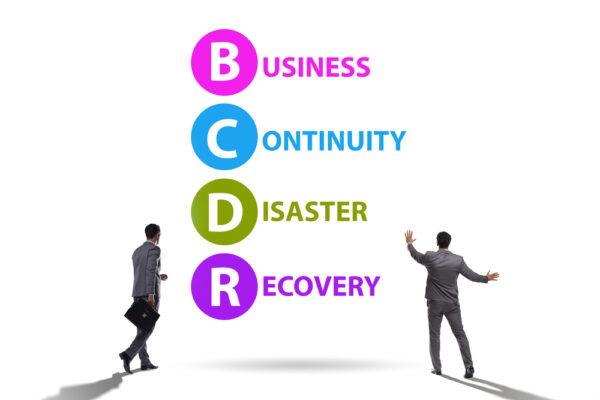Business continuity management is an important part of any company’s operations and can have a huge impact on the success of a business. For companies that need additional assurance of their security measure.
The ISO 27001 standard for business continuity management (BCM) provides a framework for organizations to evaluate information security continuity and ensure that their operations continue in case of an unexpected event. Let’s dive into why ISO 27001 BCM is important and how it works.
Why Is ISO 27001 BCM Important?
BCM helps companies identify potential threats to their business operations and develop plans to mitigate those risks. It also provides guidance on how to respond and recover from disruptive events, such as natural disasters or cyber-attacks.
Through implementing ISO 27001 BCM, organizations can protect their data and systems from malicious actors, as well as minimize the impact of any disruptions that may occur. This ensures that businesses can continue running smoothly in the face of unexpected challenges.
Additionally, ISO 27001 certification demonstrates that an organization has taken steps to secure its information systems and data, which can help build trust with customers and other stakeholders.
Overall, ISO 27001 BCM is important because it helps organizations protect their information systems and data while also demonstrating a commitment to security. By taking proactive measures to secure their data, organizations can ensure they are prepared for any potential disruptions that may arise in the future.
ISO 27001 BCM is designed to help companies protect their own information systems, data, and assets from potential risks or threats. It helps businesses plan for any type of disruption or disaster that could disrupt their operations.
A good business continuity plan should include at least three essential components: risk assessment, development of plans, and testing of those plans. The main goal of ISO 27001 BCM is to provide companies with the necessary tools to ensure that they will be able to continue operating in the event of an emergency or unplanned interruption.
ISO 27001 Information Security Continuity Objectives
The main objectives of the ISO 27001 BCM standard are twofold: first, it promotes proactive planning so that organizations can be prepared for any potential disasters; second, it encourages organizations to put practices in place that will protect their data from unauthorized access or misuse.
To achieve these goals, the standard requires organizations to identify all potential risks associated with their operations, develop plans for addressing those risks, train personnel on how best to handle them, and review their plans regularly so they can be updated when necessary.
Additionally, it requires companies to audit their systems periodically in order to ensure they are properly protected against any potential threats.
The ISO 27001 business continuity plan template is an essential tool for organizations looking to safeguard their critical business processes in the event of unexpected disruptions. By incorporating a well-designed business continuity plan template, companies can better prepare for potential challenges, ensuring the seamless continuation of operations.
A vital aspect of this planning process involves identifying the critical business processes, which are the core activities that must be maintained to preserve the organization’s functionality. The disaster recovery plan works in tandem with the business continuity plan, focusing on the restoration of essential IT infrastructure and systems.
Both recovery strategy and recovery strategies are integral elements of this approach, offering diverse solutions tailored to specific risks and potential impacts. In examining the business impact of each scenario, organizations can prioritize their efforts and allocate resources effectively, ultimately safeguarding their operations and reputation.
How Does It Work?
The first step in implementing ISO 27001 BCM is to conduct a risk assessment. During this process, organizations should identify any potential risks or threats that could affect their operations and develop strategies for mitigating these risks.
Once these risks have been identified, the organization can then create a business continuity plan (BCP). This plan should include detailed steps for responding to various types of incidents and emergencies as well as strategies for minimizing the impact on operations and customer service during a disruption.
The BCP should also outline procedures for restoring normal operations quickly after an incident has occurred. Following this step, organizations should test their BCPs regularly by simulating different scenarios to assess whether they would be effective in responding to an actual emergency situation.
Information Security Aspects of Business Continuity Management
In order to ensure effective BCM, organizations must include information security and privacy controls in their plans. This includes identifying events that could cause interruptions, such as cyber-attacks or natural disasters, and developing strategies for responding to them.
Organizations should also consider how they will protect their data and systems from unauthorized access or manipulation.
The ISO 27001 Annex A.17 standard provides guidance on how organizations can implement information security continuity processes and procedures. This includes establishing controls to protect data and systems, monitoring threats, and training staff on BCM best practices.
Additionally, it is important for organizations to ensure that their security and BCDR teams are in sync when it comes to recovering data after a breach or other incident.
ISO 27001 compliance is incredibly simple. Achieve compliance with iso 27001 Annex. A.17. Achieve certification.
Why is Business Continuity Management important for your organisation?
BCM helps organizations prepare for and respond to unexpected events such as natural disasters, cyber-attacks, or supply chain failures. By having a plan in place to deal with these disruptions, organizations can minimize the impact on their operations and maintain continuity of service.
BCM is important because it ensures that an organization is prepared for any eventuality. It helps organizations identify potential risks and develop strategies to mitigate them before they become a problem.
BCM helps organizations maintain customer trust by ensuring that services are not interrupted during times of crisis. By investing in BCM, organizations can protect their reputation and safeguard their future success.
Overall, Business Continuity Management is an essential part of any organization’s risk management strategy. It helps organizations identify potential risks and develop plans to ensure that business operations can continue even in the face of disruption. Investing in BCM is an important step towards protecting your organization’s reputation and safeguarding its future success.
In case an unavoidable disruption occurs to business operations, effectively a formal business continuity” plan ensures a fast resumption of business operations. The plan requires evaluating the risks associated with it and taking action to safeguard its integrity, availability, and confidentiality.

5.29 Information security during disruption
Control 5.29 is an operational process and procedure that is activated when critical events or business disruption occurs. It is important to ensure the integrity, security, accuracy, and privacy of all systems and data. This includes adhering to all applicable legal, statutory, regulatory and contractual requirements.
Organizations should have a well-established Business Continuity Plan (BCP) in place in order to remain resilient during disruptions. Without a fallback plan, it can result in serious damage to the confidentiality, integrity, and availability of information assets.
The ISO 27001:2022 update released in October 2022 included changes such as A.5.29 Information Security During Disruption (17.1.1, 17.1.2, 17.1.3).
The level of security that can be achieved through technological measures alone is limited and should be supported by appropriate management activities and processes such as Control 5.29 Information Security During Disruption outlined in ISO/IEC 27002:2022(en).
Organizational risks may vary depending on how many people they have to deal with. The need and necessity of maintaining or restoring services when unexpected and unavoidable events disrupt routine operations can sometimes require careful planning.
Business continuity plans involve identifying vulnerability, priorities, and measures that can be used as a tool for business continuity planning before a disruption occurs, and a recovery plan.
What are the Annex A.17 controls?
Annex A.17 of the ISO 27001 standard outlines the requirements for an organization’s business continuity management in relation to its information security aspects. These existing information security controls are designed to ensure that information security continuity is embedded within the organization’s business continuity management systems.
The controls in this section aim to configure a system that can handle business disruptions with a focus on information security, such as defining and documenting procedures and processes for responding to disruptive events, testing these processes, and maintaining records of tests and results.
Organizations must also consider how they will maintain the confidentiality, integrity, and availability of their data during any disruption. Annex A. 17 includes four controls for the information security continuity controls within a two-part subset.
This Control does the following: such as encrypting data both at rest and in transit, using cryptographic keys to protect data from unauthorized access, implementing secure backup solutions, monitoring system logs for suspicious activity and ensuring that all personnel are aware of their roles in responding to disruptive events.
Overall, Annex A.17 controls are designed to help organizations prepare for potential disruptions by ensuring that their information security systems are robust enough to maintain processes.
1.2 Implementing Information Security Continuity
ISO 27001 Annex A.17 outlines the requirements for implementing information security continuity, which includes establishing, documenting, implementing and maintaining processes, procedures and controls to ensure the availability of information systems without interruption.
Organizations should develop plans that include information security requirements and verify these controls at regular intervals to ensure they are effective. Additionally, organizations should consider how their information systems will be affected by disruptions such as natural disasters or malicious attacks and have measures in place to protect them from potential threats.
Finally, organizations should also take into account the impact of changes in technology or personnel on their information security continuity plans and make sure they are up-to-date with the latest industry standards.
Relevant escalation trigger points on information security requirements remain with incident response personnel. They deal with more significant disruptive incidents that required resources to carryout business impact analysis and periodic testing of disaster recovery plan.
Organisations must establish documented procedures and control procedures to maintain the appropriate level of security the organization during an unavoidable adverse situation. When requirements have been mapped, organisational procedures and physical/technical controls should provide a reasonable basis for fulfilling these objectives.
Description of tasks, actions, owners, timings, and mitigation actions to be undertaken (aside from risk and policies already in place e.g. crisis communication).

The organization should establish, record, execute, and maintain the information security continuity requirements
It is a more effective method of improving versus delayed perfection. Information stored within an information system is needed to implement the process.
The security profession must participate actively in developing, implementing and maintaining business continuity and systems and procedures to support the disaster recovery process. During adverse conditions, data security checks should be conducted.
ISO 27001 Implementation Guidance( 17.1.2 implementing information security)
Organizations must determine requirements for implementing a system of data protection measures in an event of a disruption. Information security is a critical requirement for the business continuity management process.
A comprehensive plan is needed to ensure that the data security of the critical business processes remains a priority in the business continuity management processes in event of failure. Information safety should be restored to the required levels within the specified time.
The company is required to implement and maintain information security management systems and tools within its enterprise continuity plan.
1.1 Planning Information Security Continuity
Organizations must identify their requirements for information protection and an adequate management structure for the continuity of information security in adverse conditions, such as in an emergency.
Most ISMSs have a more comprehensive Annex A control structure preventing the requirement for implementing disaster management plans in line A17. Even if these efforts are successful, significant disruptions may still occur. How do you deal with data centres that aren’t accessible?
Framework and Planning Cycle
In this context, the structure is ensured by the planning process, the development and testing of a plan, procedures to maintain and update the plans, and the roles and responsibilities for which each individual member is responsible before, during and after an event.
Select a plan framework. What should a business continuity management system or plan involve and in which role?
2.1 Availability of Information Processing Facilities
A good control shows the process for implementing a data processing facility with redundancy sufficient to meet the available requirements. Redundancy refers to a method that implements overlapping and redundant items of hardware in a system for providing the required information for processing.
Generally, if something fails, then there is another item that has already failed. It’s crucial to periodically inspect redundant components and system components to ensure failure-over occurs in a timely manner. All redundant components should be rated in the same range or better as all the secondary components.
Training, Maintaining, and Re-assessing Business Continuity Plans
Those plans need to contain organized and controlled procedures to develop and maintain procedures to ensure continuous operation under extremely adverse circumstances including the maintenance of safeguards of privacy in the use of information. This involves training people with responsibility for planning implementation with a regularly scheduled review of the plan and updating its content to keep it current.
Conclusion
Business continuity management is essential for protecting businesses from potential disruptions or disasters. The ISO 27001 standard provides a comprehensive set of guidelines and procedures that businesses can use for their business continuity team to ensure they are prepared and able to continue operating in case of an unexpected event.
Organizations should take the time to assess their risks, develop a comprehensive business continuity plan, and test it regularly in order to ensure their operations remain secure during any type of disruption or disaster.

Chris Ekai is a Risk Management expert with over 10 years of experience in the field. He has a Master’s(MSc) degree in Risk Management from University of Portsmouth and is a CPA and Finance professional. He currently works as a Content Manager at Risk Publishing, writing about Enterprise Risk Management, Business Continuity Management and Project Management.


